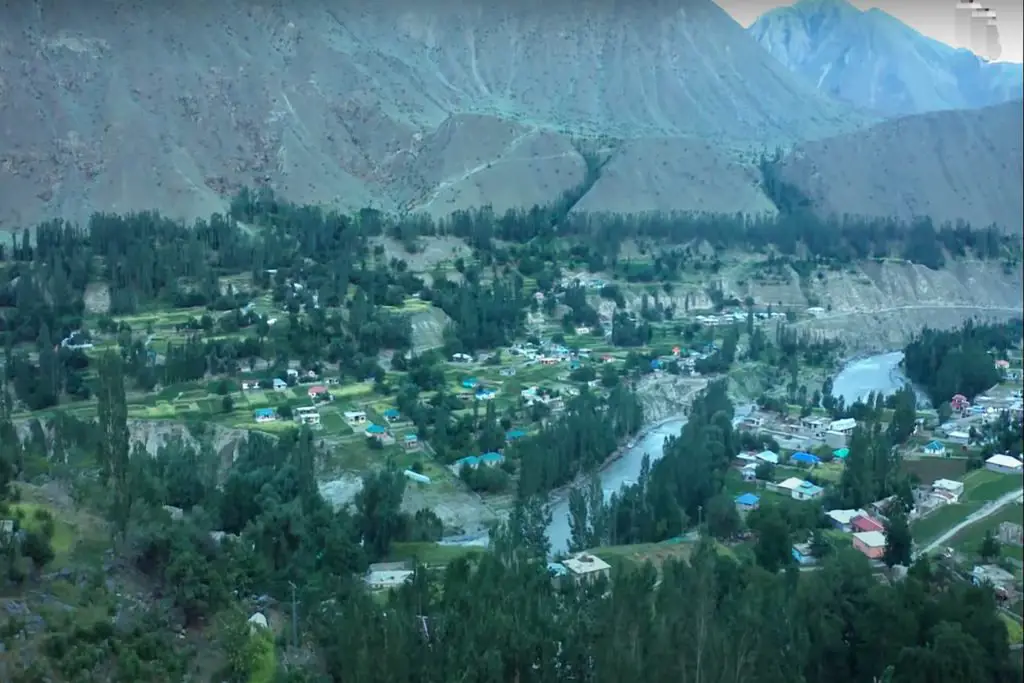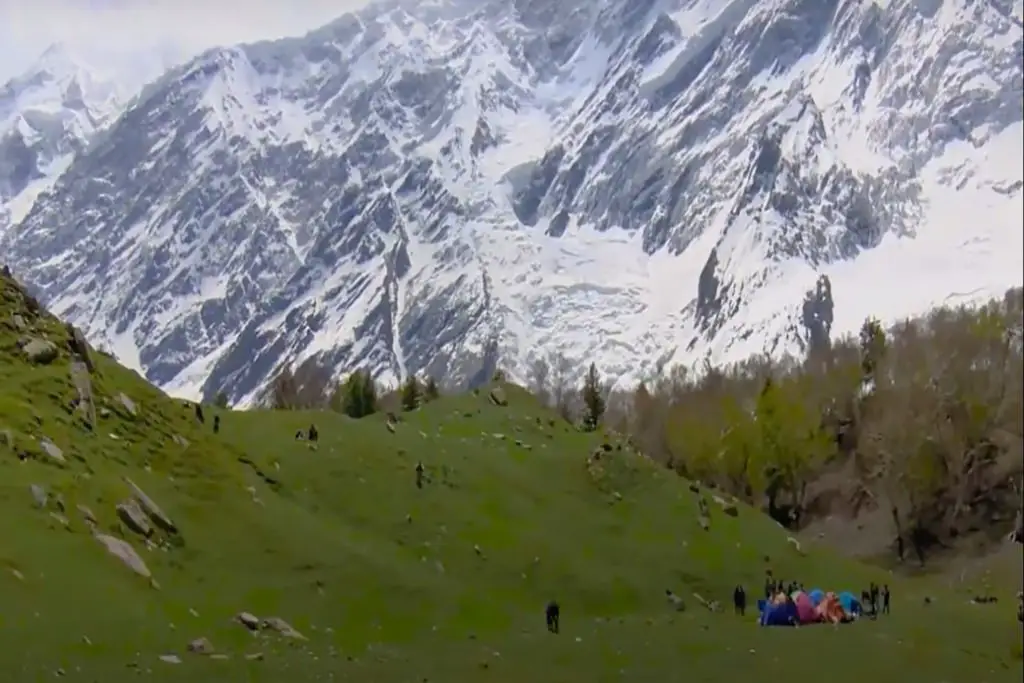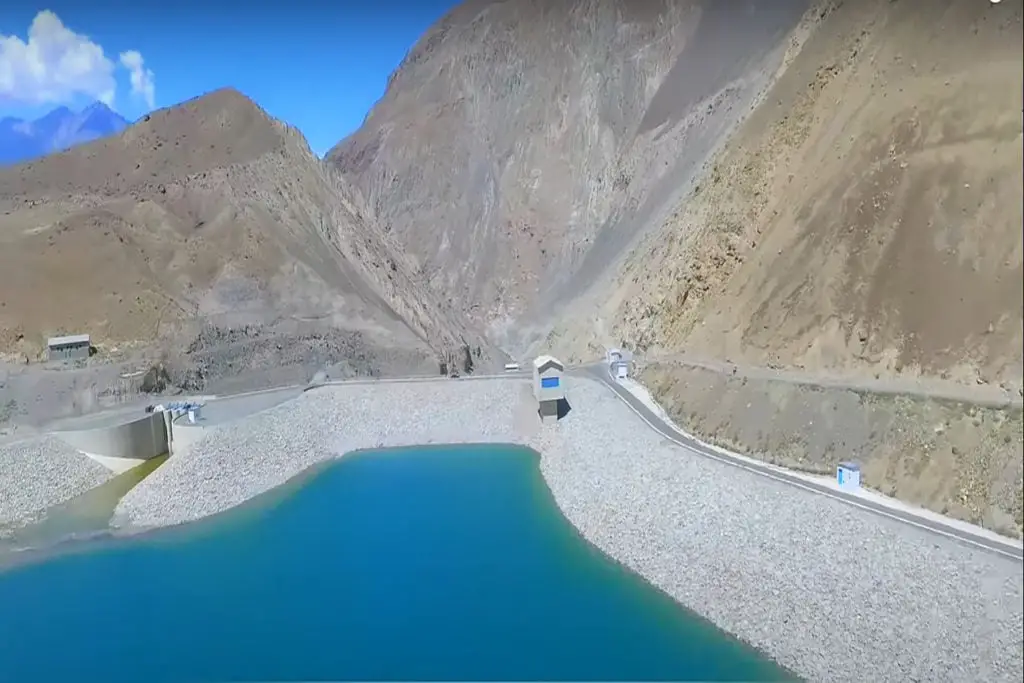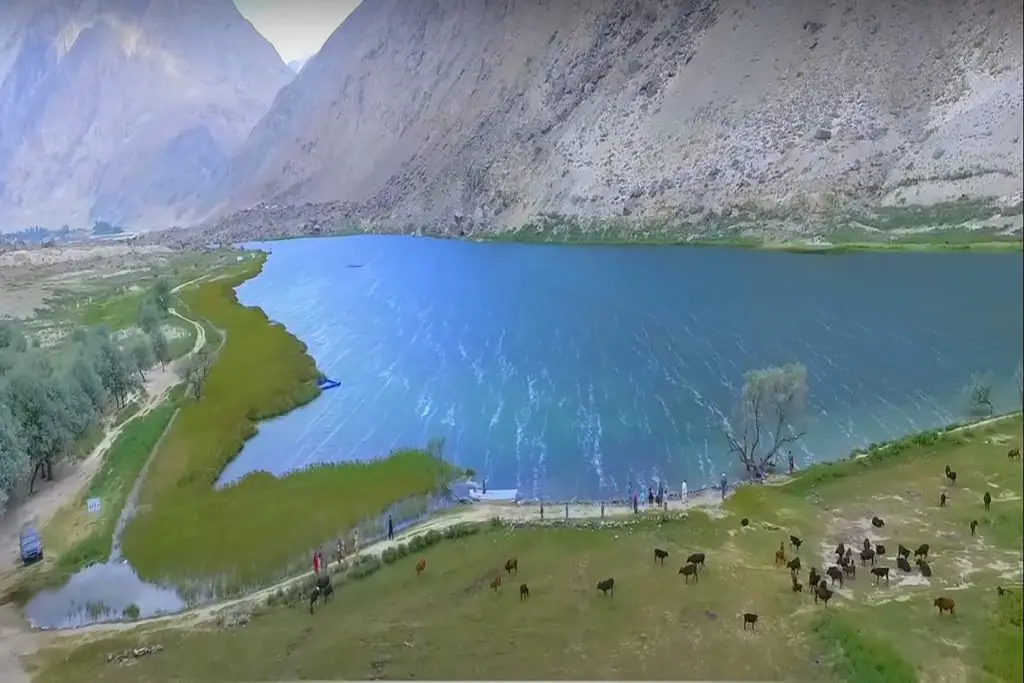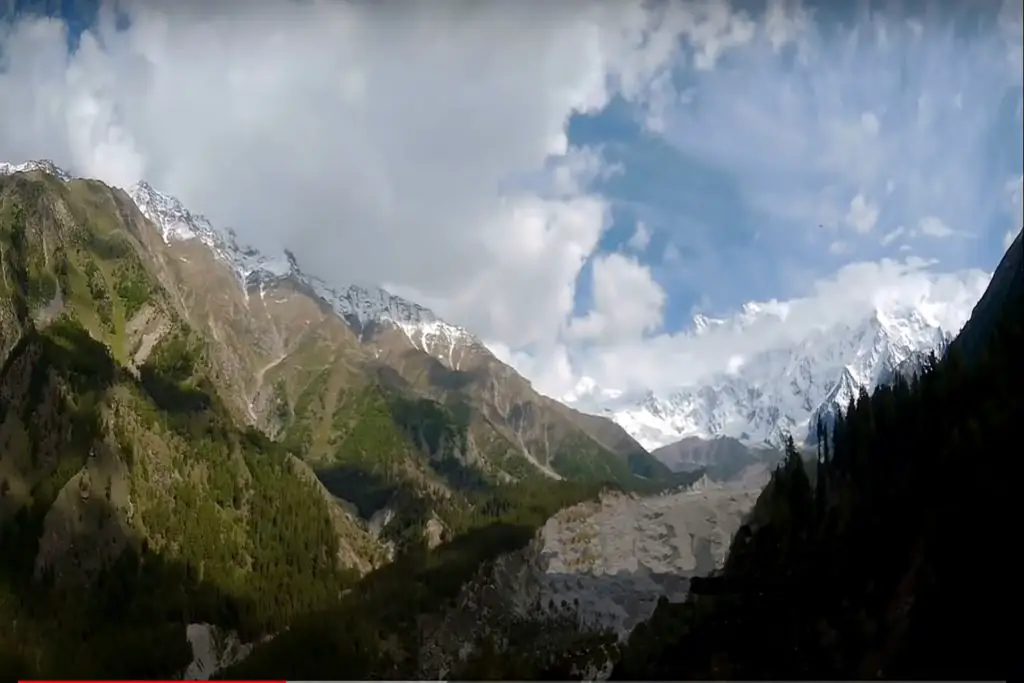The Shyok River is a significant tributary of the Indus River, flowing through India and Pakistan. The river originates from the Rimo Glacier in the Karakoram Range of the Himalayas, in Jammu and Kashmir. It flows for about 550 km before joining the Indus River at Keris, in the Gilgit-Baltistan region of Pakistan.
Geography and Topography
The Shyok River originates from the Rimo Glacier, one of the largest glaciers in the Karakoram Range of the Himalayas. The river flows through the districts of Leh and Kargil in the state of Jammu and Kashmir, and the Skardu district in the Gilgit-Baltistan region of Pakistan. The river has a total length of around 550 km and drains an area of about 14,000 square km.
The river is characterized by deep gorges, steep slopes, and rapid currents. The valley of the Shyok River is narrow and rocky, and the river flows through a series of narrow canyons, creating spectacular landscapes. The river also passes through several small towns and villages, including Durbuk, Tangtse, and Diskit.
The river is fed by several tributaries, including the Nubra River, which joins the Shyok River at Khalsar. The Nubra River is fed by several glaciers, including the Siachen Glacier, one of the largest glaciers in the world.
Importance of the Shyok River
The Shyok River is an important tributary of the Indus River and is a vital source of water for irrigation and drinking purposes. The river is also used for hydroelectric power generation, with several hydroelectric power plants located along its course.
The Shyok River is also important for tourism, with several trekking routes and scenic spots located along its course. The river is surrounded by spectacular landscapes, including snow-capped mountains, glaciers, and valleys, making it a popular destination for adventure enthusiasts and nature lovers.
Why Shyok River is called as River of Death?
The Shyok River, located in the Ladakh region of northern India and the Gilgit-Baltistan region of Pakistan, has earned the reputation of being called the “river of death” due to its treacherous nature and the challenging conditions it presents to travelers and adventurers. There are several reasons why the Shyok River has acquired this ominous nickname:
-
Fast and Turbulent Waters: The Shyok River is known for its fast and turbulent currents. The river flows through steep gorges and narrow valleys, creating treacherous rapids and unpredictable water movements. The combination of high speed and strong currents makes it challenging for even experienced rafters and kayakers to navigate the river safely.
-
Remote and Inhospitable Terrain: The Shyok River flows through remote and inhospitable terrain, characterized by towering mountains, rugged cliffs, and barren landscapes. The lack of accessible roads and infrastructure in the region adds to the difficulties of rescue and evacuation in case of emergencies or accidents.
-
Cold and Harsh Climate: The region through which the Shyok River flows experiences extreme cold and harsh weather conditions, particularly during the winter months. The freezing temperatures and icy waters of the river pose additional risks to anyone attempting to cross or traverse its waters.
-
Limited Local Population: The areas surrounding the Shyok River have sparse human settlements, with limited local populations. This means that in case of accidents or emergencies, help and rescue may not be readily available. The lack of nearby communities or resources further contributes to the river’s reputation as a dangerous and potentially deadly waterway.
-
Historical Incidents: There have been incidents and accidents in the past involving travelers, explorers, and military personnel attempting to navigate or cross the Shyok River. These incidents have contributed to the river’s reputation and the moniker “river of death.”
It is important to note that while the Shyok River poses significant risks, it can also be appreciated for its stunning natural beauty and unique landscapes. However, it is essential to exercise caution and respect the river’s power and potential dangers when considering any activities near or on its waters.
Challenges and Concerns
The Shyok River faces several challenges and concerns, including environmental degradation, water pollution, and climate change. The region is prone to earthquakes and landslides, which can cause damage to the infrastructure and disrupt the flow of the river.
The region is also prone to flash floods, which can cause significant damage to the local communities and infrastructure. Flash floods are often caused by heavy rainfall and the melting of glaciers, which is becoming increasingly common due to climate change.
The Shyok River is an important tributary of the Indus River, and its significance extends beyond its role as a source of water for irrigation and drinking purposes. The river is an important source of hydroelectric power, and it is also a popular destination for tourism, offering spectacular landscapes and adventure activities.
However, the river faces several challenges and concerns, including environmental degradation, water pollution, and climate change. It is important to address these challenges and concerns to ensure the sustainability of the river and the communities that depend on it.
What is the Shyok River famous for?
The Shyok River is famous for several reasons, primarily due to its stunning natural beauty, unique landscapes, and its strategic importance in the region. Here are some aspects for which the Shyok River is well-known:
-
Scenic Beauty: The Shyok River passes through breathtaking landscapes, including the Karakoram Range and the Ladakh and Gilgit-Baltistan regions. The river flows amidst towering mountains, deep gorges, and picturesque valleys, offering awe-inspiring vistas that attract nature enthusiasts, photographers, and adventure seekers.
-
Confluence with the Indus River: One of the significant features of the Shyok River is its confluence with the Indus River near the town of Skardu in Pakistan. The meeting point of these two rivers creates a mesmerizing spectacle where the crystal-clear waters of the Shyok merge with the mighty Indus, enhancing the natural beauty of the area.
-
Adventure Sports: The fast-flowing and challenging nature of the Shyok River attracts adventure enthusiasts who seek thrill and excitement. Rafting and Kayaking in the river’s rapids are popular activities for experienced adventurers looking to test their skills in an exhilarating environment.
-
Strategic Importance: The Shyok River holds strategic importance due to its proximity to the Line of Control (LoC) between India and Pakistan. The river valley serves as a vital route for military operations, providing access to the Siachen Glacier, one of the highest battlegrounds in the world.
-
Cultural Significance: The region surrounding the Shyok River is home to diverse cultures, including the Balti people of Gilgit-Baltistan and the Ladakhi people of Ladakh. These communities have a rich cultural heritage, and their traditions, festivals, and way of life are intertwined with the river and its surroundings.
-
Wildlife and Biodiversity: The Shyok River and its surrounding areas support a diverse range of flora and fauna. The river valley is home to several wildlife species, including ibex, snow leopards, Himalayan bears, and a variety of bird species. This makes it a destination of interest for nature lovers and wildlife enthusiasts.
-
Trekking and Camping: The scenic beauty and remote location of the Shyok River make it an ideal destination for trekking and camping. Adventure enthusiasts can embark on treks along the river, exploring the surrounding valleys, remote villages, and high-altitude passes.
It is important to note that while the Shyok River offers opportunities for exploration and adventure, visitors should always prioritize safety and respect for the environment. Weather conditions, the challenging terrain, and the river’s unpredictable nature require careful planning, preparation, and adherence to safety guidelines to ensure a memorable and secure experience.

